Phobos Revealed
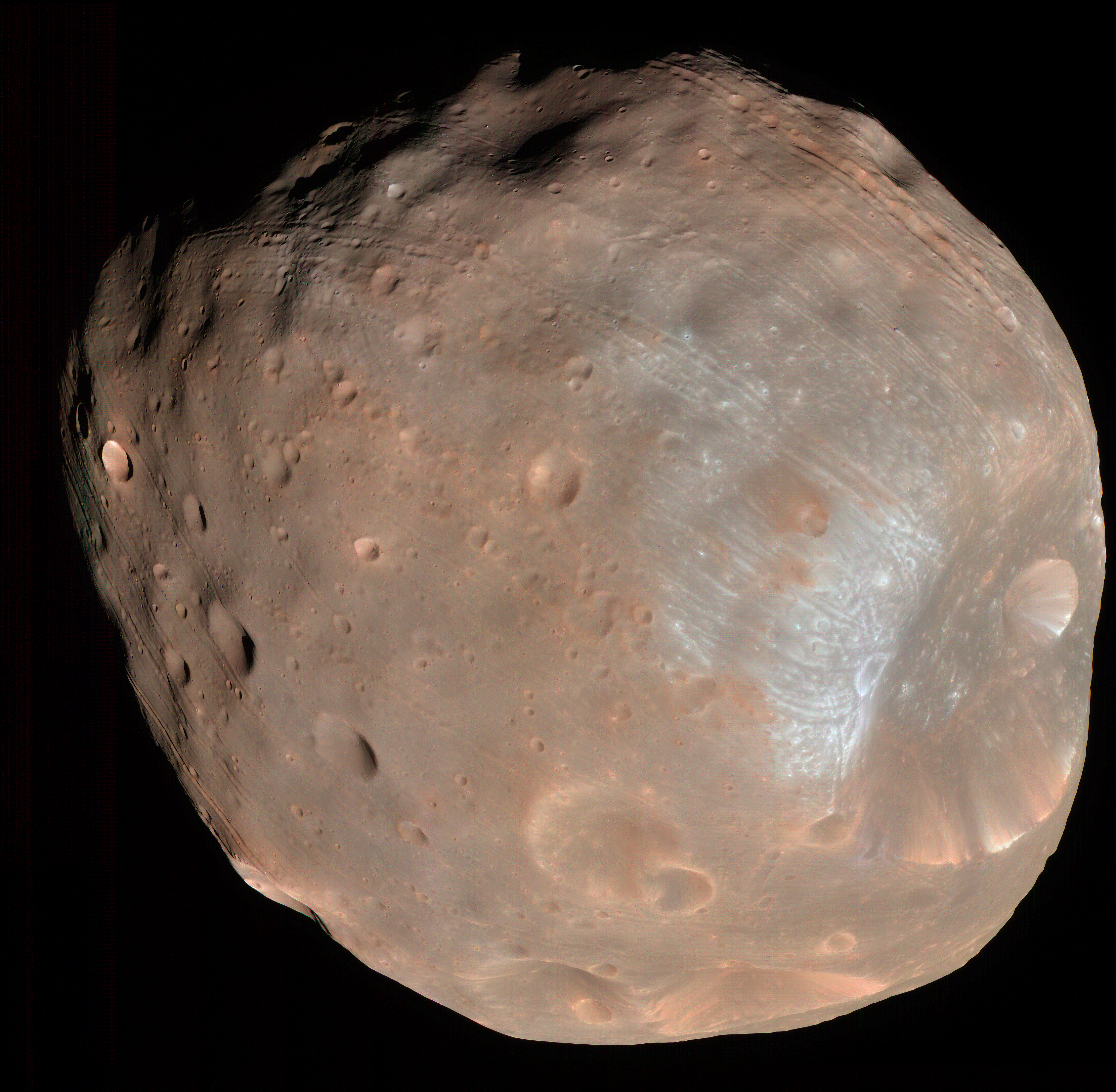
NASA's Mars Reconnaissance Orbiter took this image of the larger of Mars' two moons, Phobos, from a distance of about 6,800 kilometers (about 4,200 miles).
Illustration Comparing Apparent Sizes of Mars' Moons
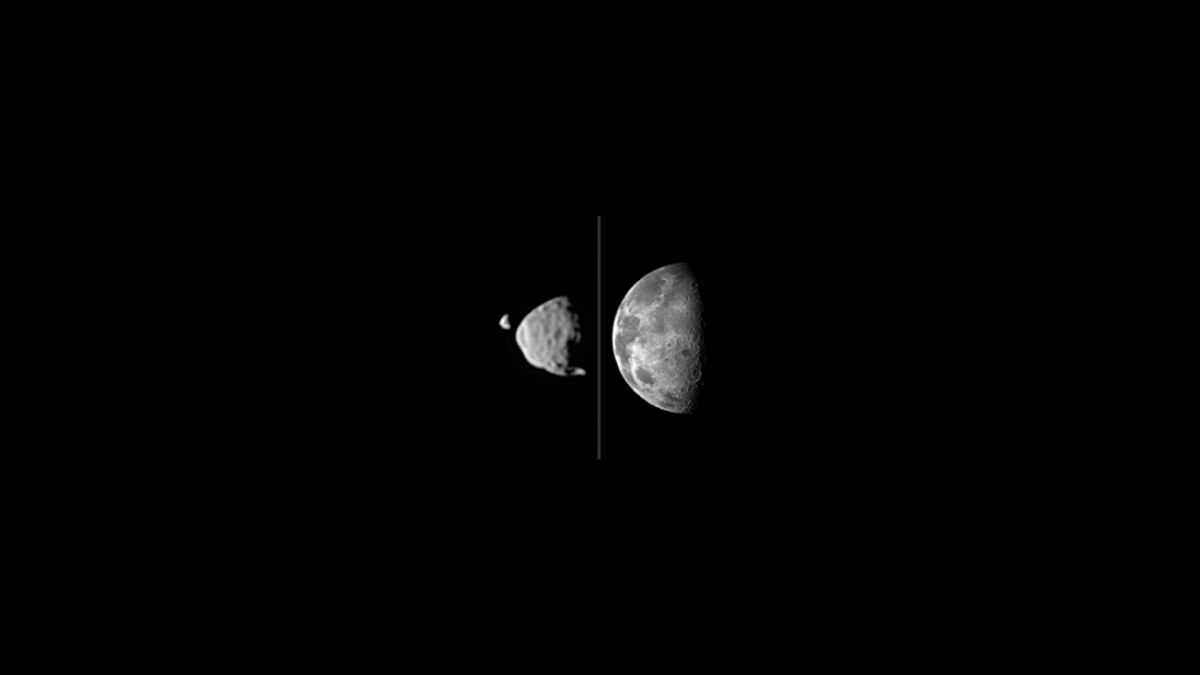
This illustration provides a comparison for how big the moons of Mars appear to be, as seen from the surface of Mars, in relation to the size that Earth's moon appears to be when seen from the surface of Earth. Deimos, at far left, and Phobos, beside it, are shown together as they actually were photographed by the Mast Camera (Mastcam) NASA's Mars rover Curiosity on Aug. 1, 2013.
Before and After Occultation of Deimos by Phobos
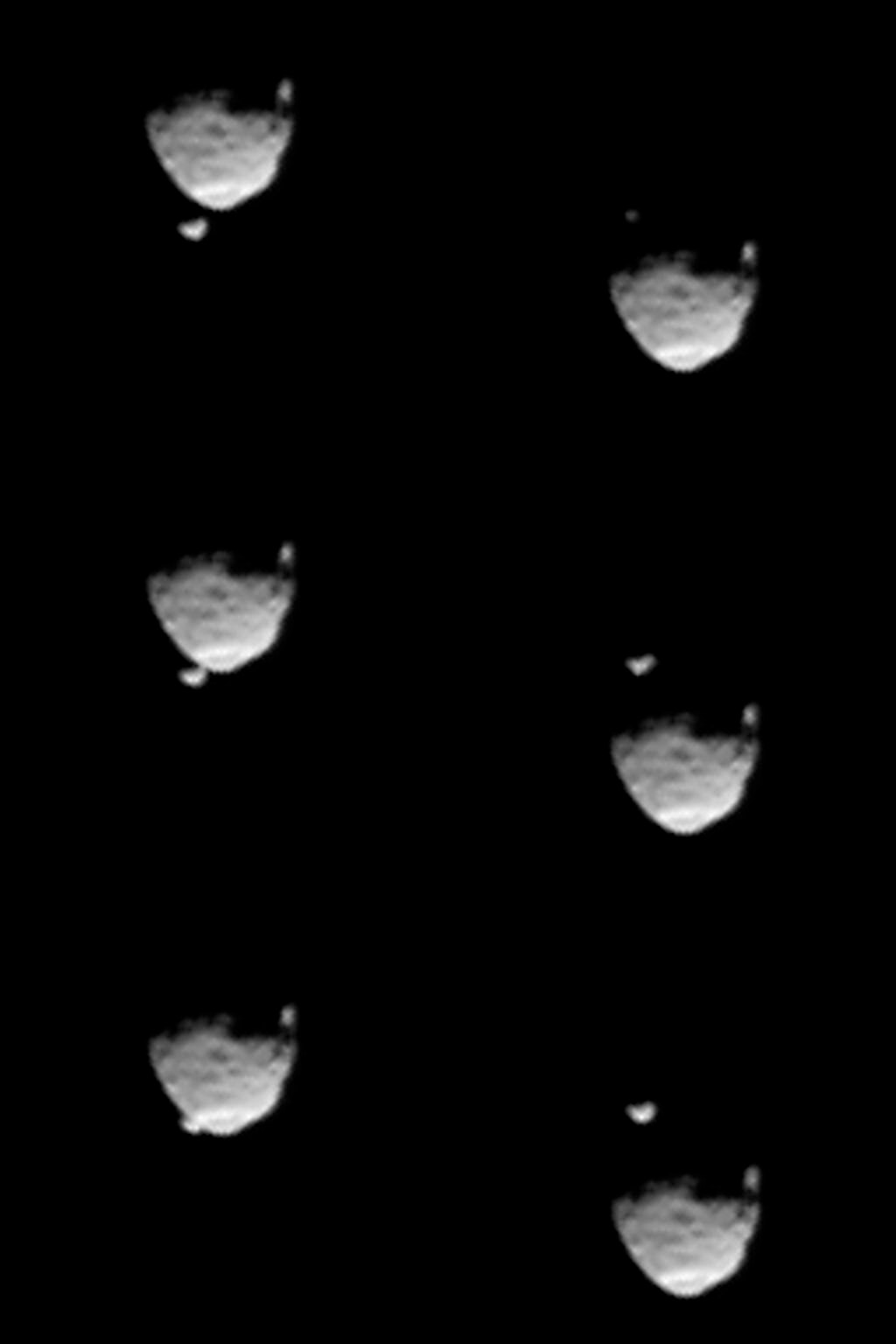
These six images from NASA's Mars rover Curiosity show the two moons of Mars moments before (left three) and after (right three) the larger moon, Phobos, occulted Deimos on Aug. 1, 2013. On each side, the top image is earlier in time than the ones beneath it.
Deimos
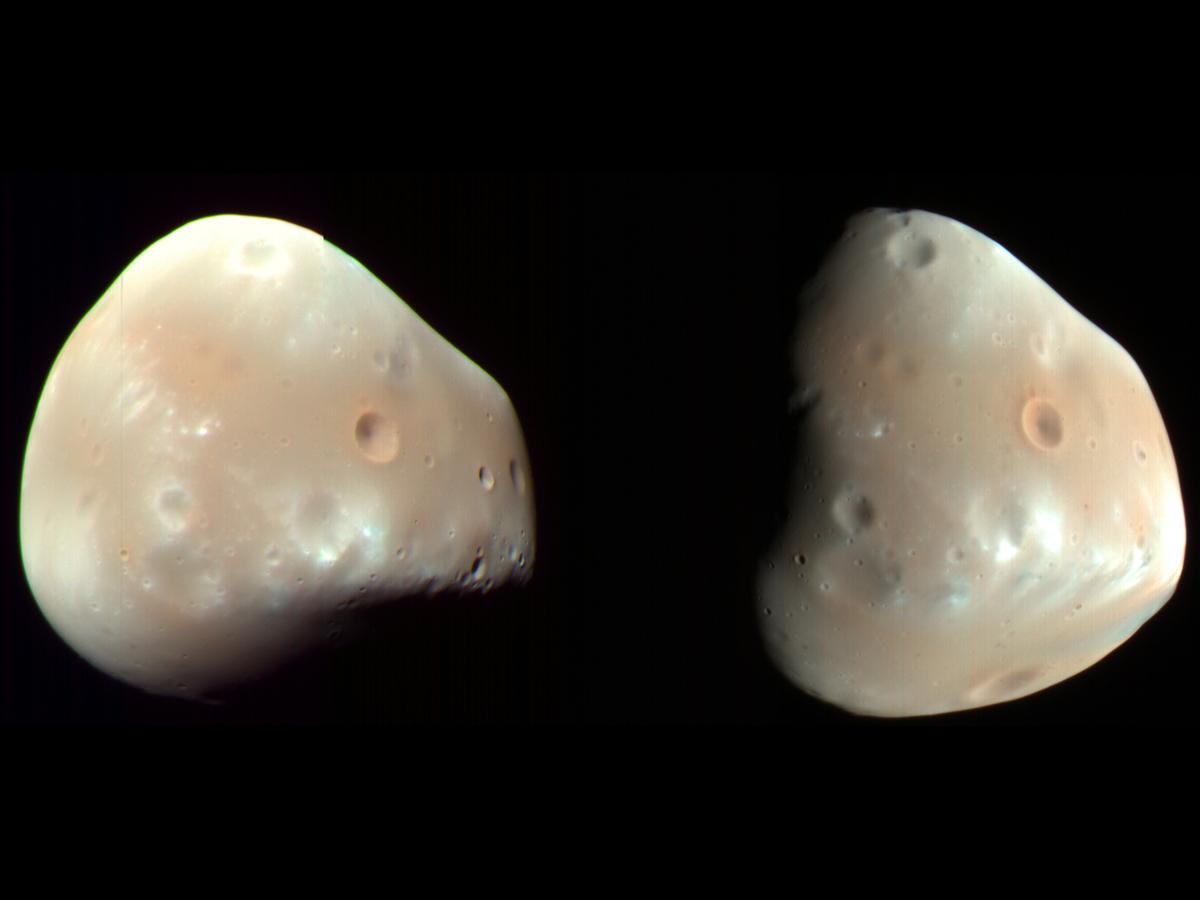
Images captured by NASA's Mars Reconnaissance Orbiter, reveal that the surface of Deimos is mostly smoooth, marred only by recent impact craters.
Martian Moon Phobos Seen by Curiosity Rover
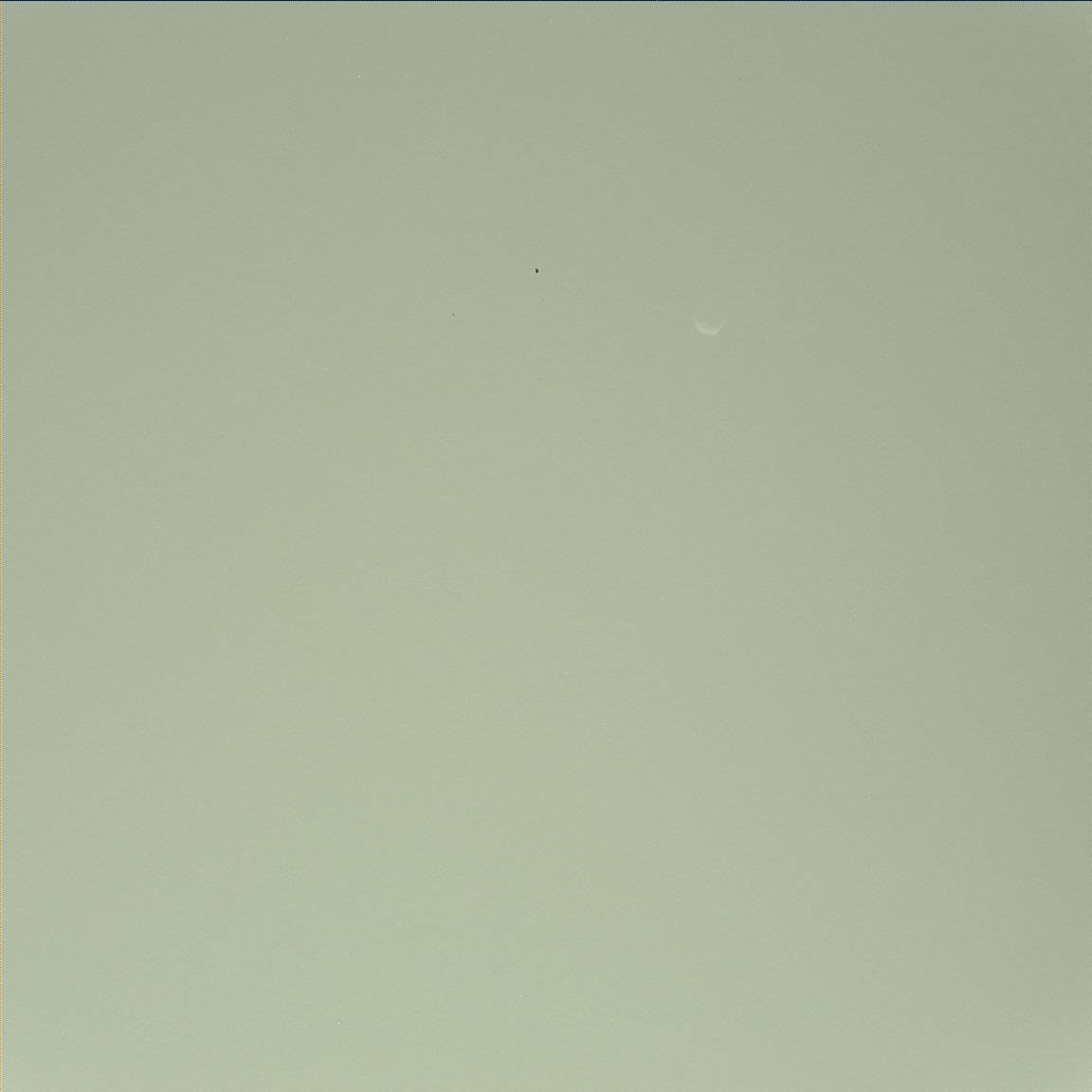
NASA's Mars rover Curiosity snapped this photo of the larger Martian moon Phobos during a Mars sky observing session. Phobos is Mars' larger moon, but only 14 miles across. Image released Sept. 26, 2012.
Martian Moon Phobos Seen by Curiosity Rover, Closeup
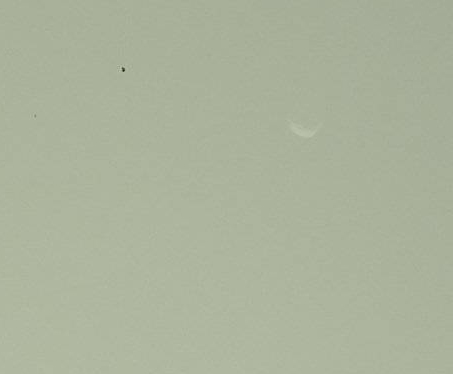
This close up from a photo by NASA's Mars rover Curiosity shows the Martian moon Phobos as a faint crescent in the Martian evening sky. The black blemish is the result of a bad pixel in the image data. Image released Sept. 26, 2012.
Two Moons of Mars in One Enhanced View
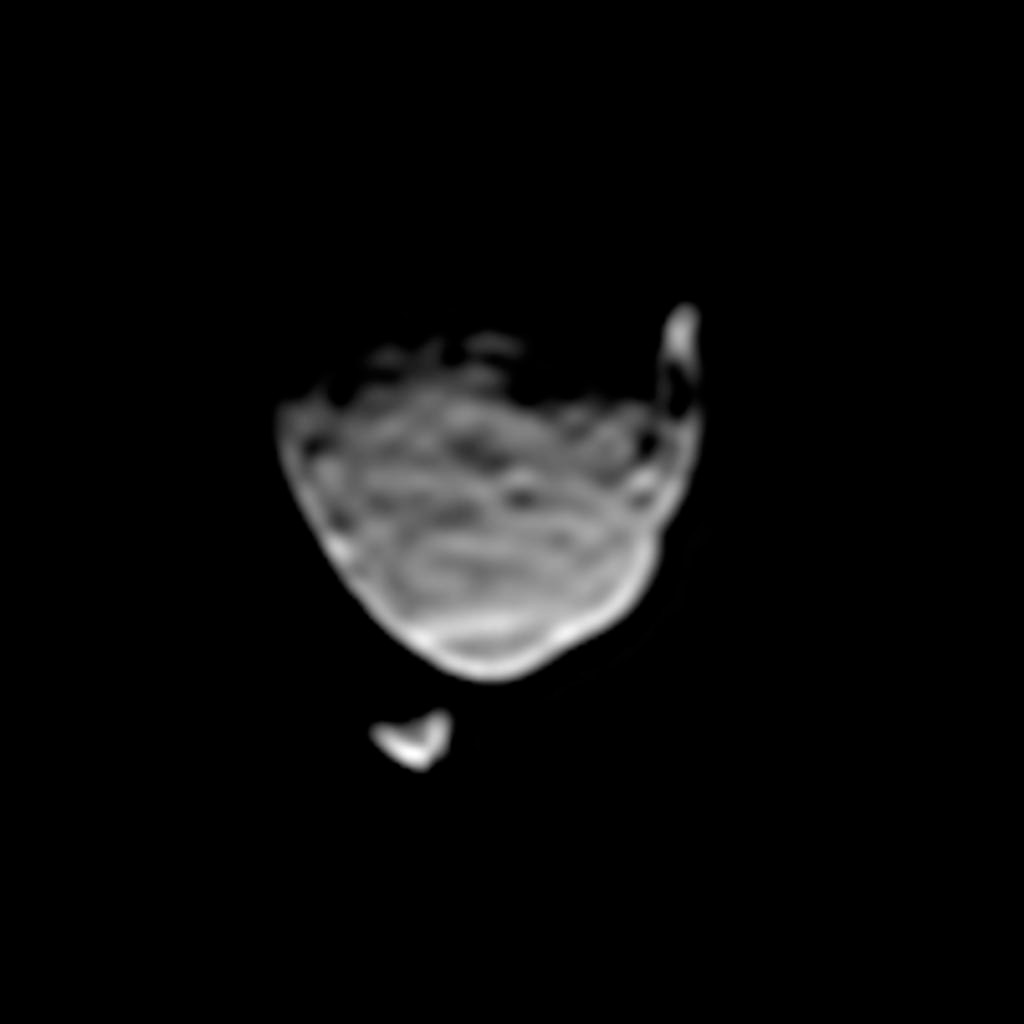
This view of the two moons of Mars comes from a set of images taken by NASA's Mars rover Curiosity as the larger moon, Phobos, passed in front of the smaller one, Deimos, from Curiosity's perspective, on Aug. 1, 2013.
Get the Space.com Newsletter
Breaking space news, the latest updates on rocket launches, skywatching events and more!
Mars Rover Curiosity Sees Phobos
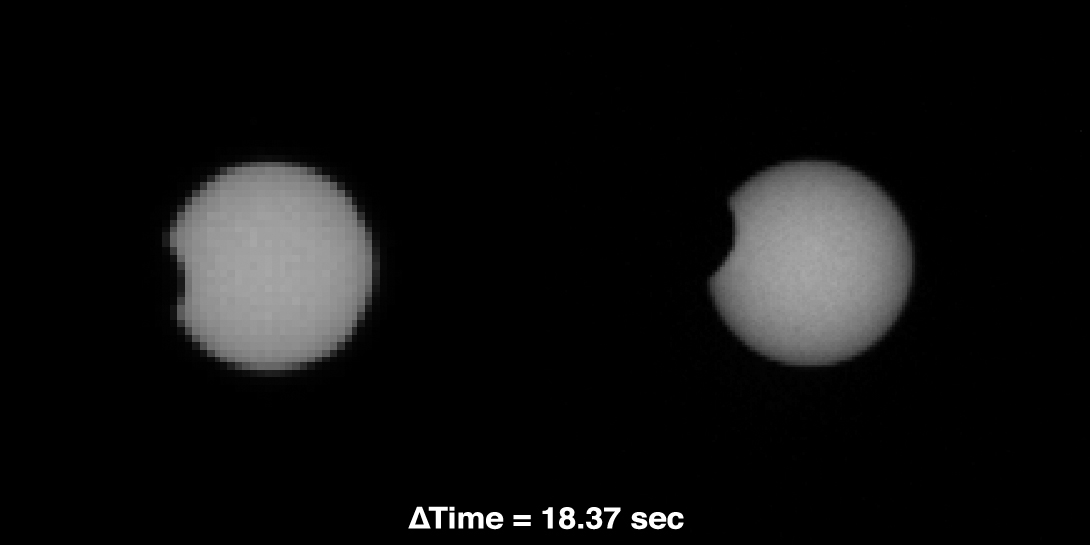
As part of a multi-mission campaign, NASA's Curiosity rover is observing Martian moon transits, the first of which involved the moon Phobos grazing the sun's disk. The event was observed on Martian day, or sol, 37 (September 13, 2012) using Curiosity's Mast Camera, or Mastcam, equipped with special filters for directly observing the sun
Mars Express View of Phobos

The view of Phobos from all five channels on Mars Express' High Resolution Stereo Camera.
Martian Moons Pair Up
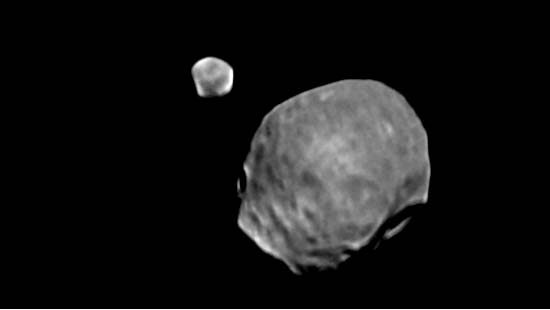
In a first, ESA\'s Mars Express orbiter imaged the Martian moons Phobos and Deimos together on Nov. 5, 2009. Phobos, the larger of the two moons, orbits closer to Mars, circling the planet every 7 hou
Phobos, Up Close
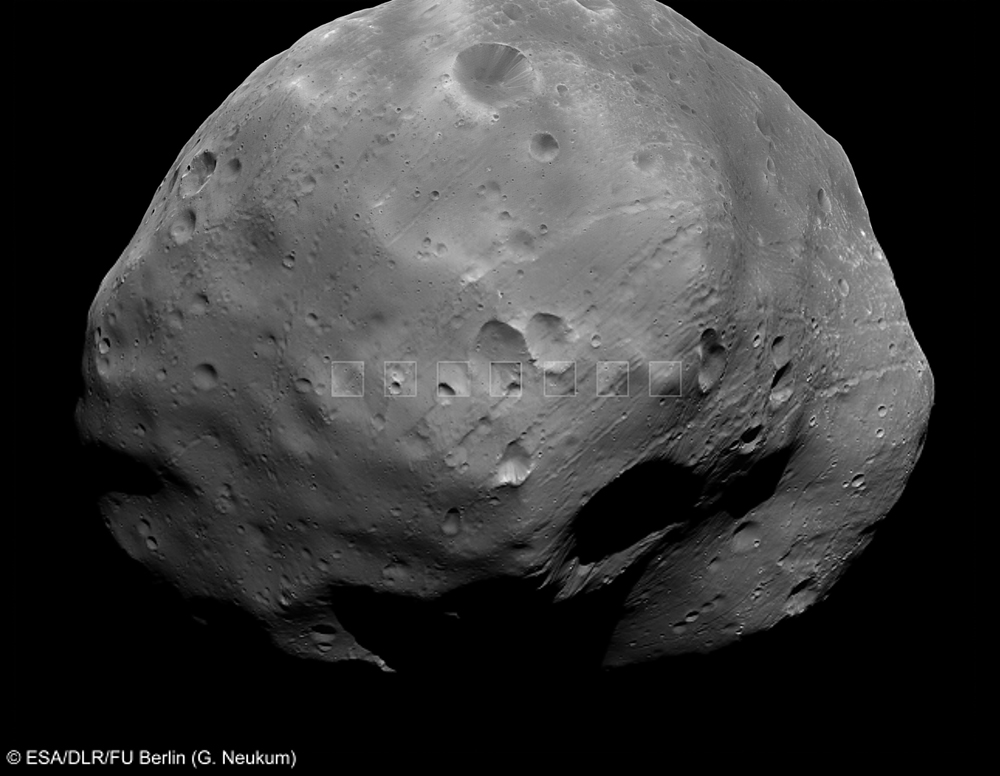
In this picture, seven close-up views of Phobos, taken by the Super Resolution Channel on the High Resolution Stereo Camera, are superimposed on the wider view.
Join our Space Forums to keep talking space on the latest missions, night sky and more! And if you have a news tip, correction or comment, let us know at: community@space.com.
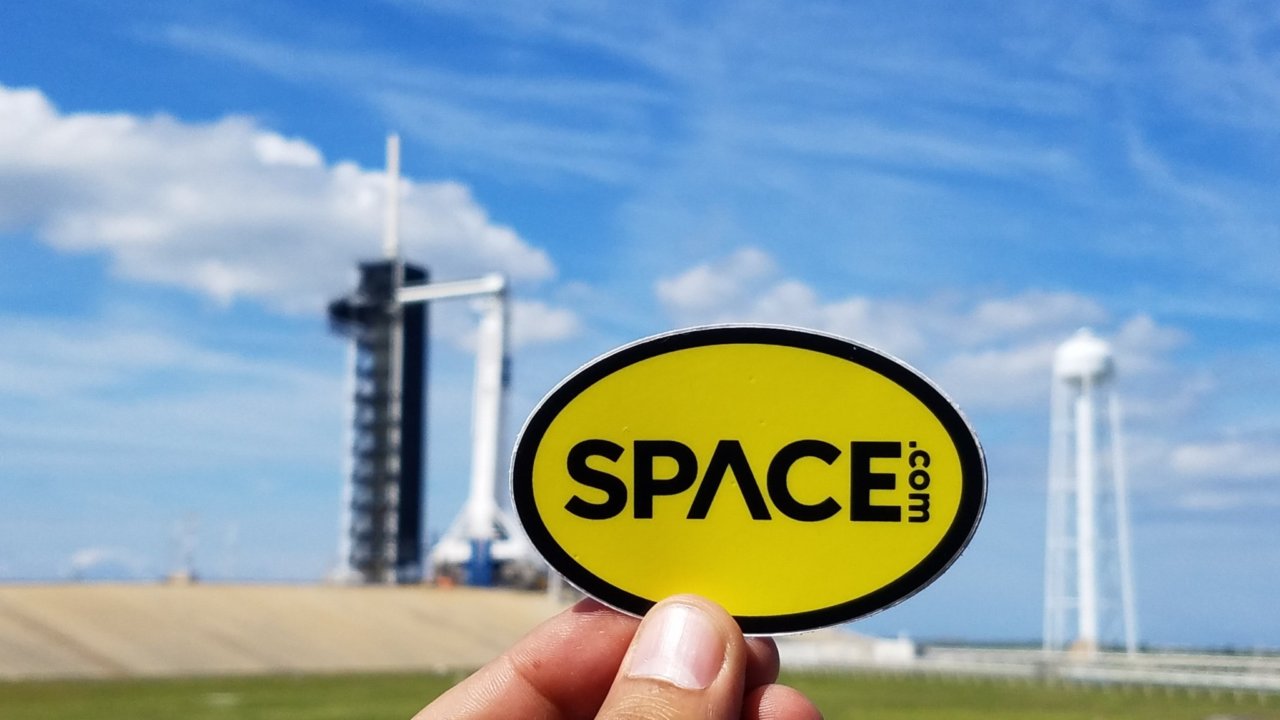
Space.com is the premier source of space exploration, innovation and astronomy news, chronicling (and celebrating) humanity's ongoing expansion across the final frontier. Originally founded in 1999, Space.com is, and always has been, the passion of writers and editors who are space fans and also trained journalists. Our current news team consists of Editor-in-Chief Tariq Malik; Editor Hanneke Weitering, Senior Space Writer Mike Wall; Senior Writer Meghan Bartels; Senior Writer Chelsea Gohd, Senior Writer Tereza Pultarova and Staff Writer Alexander Cox, focusing on e-commerce. Senior Producer Steve Spaleta oversees our space videos, with Diana Whitcroft as our Social Media Editor.









